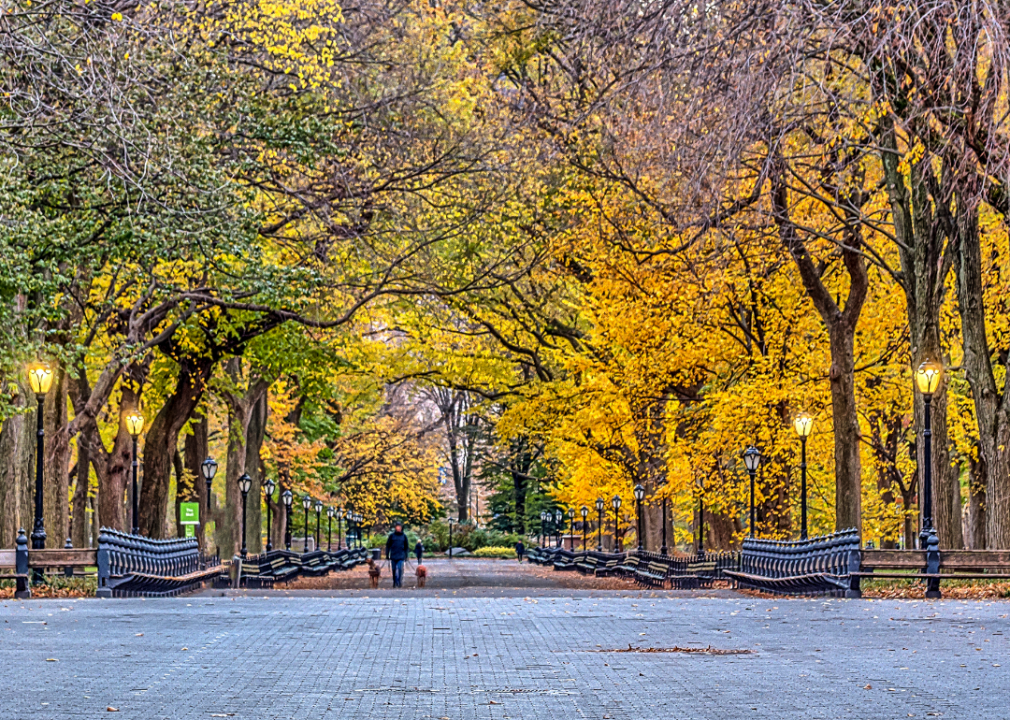
Tennessee has 2 of the 50 cities with the most green space per capita
Tennessee has 2 of the 50 cities with the most green space per capita
Green space is beneficial anywhere, but especially in concrete jungles like those found in many U.S. cities. The World Health Organization reports that green areas are essential to both the ecosystem and the mental health of citizens; though the color is fading quickly in urban areas that are cutting down trees and rapidly building on open space. There are, however, some cities across America that are fighting hard to keep green space within their borders.
Using data from the Organization for Economic Co-operation and Development, analyzed by the United Nations Office for the Coordination of Humanitarian Affairs, Stacker considered the 70 U.S. cities with the most green space per capita and then ranked the top 50 by the green space areas devoted to parks and urban regions.
Read on to see which cities in your state made the list, or see the national story here.
#8. Memphis
- Green space per capita: 43,691 sq. ft.
- Population: 1.3 million
Shelby Farms Park is one of the 20 largest urban parks in the country, more than five times the size of Central Park, and offers everything from bike trails to dog parks, fishing, and hiking. Construction of the Hampline project began in 2019 and will connect Shelby Farms and Overton Park with a biking path. Predominantly African American, Memphis has been at the forefront of removing the remaining Confederate memorial statues from its parks.
#5. Nashville
- Green space per capita: 57,699 sq. ft.
- Population: 1.8 million
Mayor David Briley is trying to maintain green space amid expansion. The Music City Center is home to the largest green roof in the Southeast, a 4-acre rooftop plot that houses rolling hills and a bee sanctuary. Greenways for Nashville is an effort to connect the residents of Nashville through a system of trails and paths.
Some cities have gotten creative in constructing green space within their boundaries. Houston, Nashville, and Des Moines, Iowa, are among the many cities putting large green spaces on public rooftops. Atlanta even has plans to cover some of its highways with parks.
The former commissioner of the New York City Department of Parks and Recreation Adrian Benepe promotes the 10-Minute Walk campaign, an initiative to have a park within a 10-minute walk in all U.S. cities by 2050. Now the senior vice president for the Trust for Public Land, Benepe points to how green space helps the ecosystem. "When I see a tree, I see the work of God because a tree is a remarkable machine," Benepe said. "It does extraordinary things in exchange for very little."
What's more, the health benefits of parks and green spaces in cities are numerous, according to The National Recreation and Park Association. Large parks promote active living, which can reduce the risk of diabetes and heart disease, while research shows even small parks can reduce stress and improve creativity and mental health.
To learn more about which cities made the top of the list, keep reading below.
Cities with the most green space per capita
#1. Minneapolis, MN: 105,843 sq. ft. per capita
#2. Kansas City, MO: 93,349 sq. ft. per capita
#3. Cincinnati, OH: 67,723 sq. ft. per capita
#4. Washington, DC: 63,138 sq. ft. per capita
#5. Nashville, TN: 57,699 sq. ft. per capita



